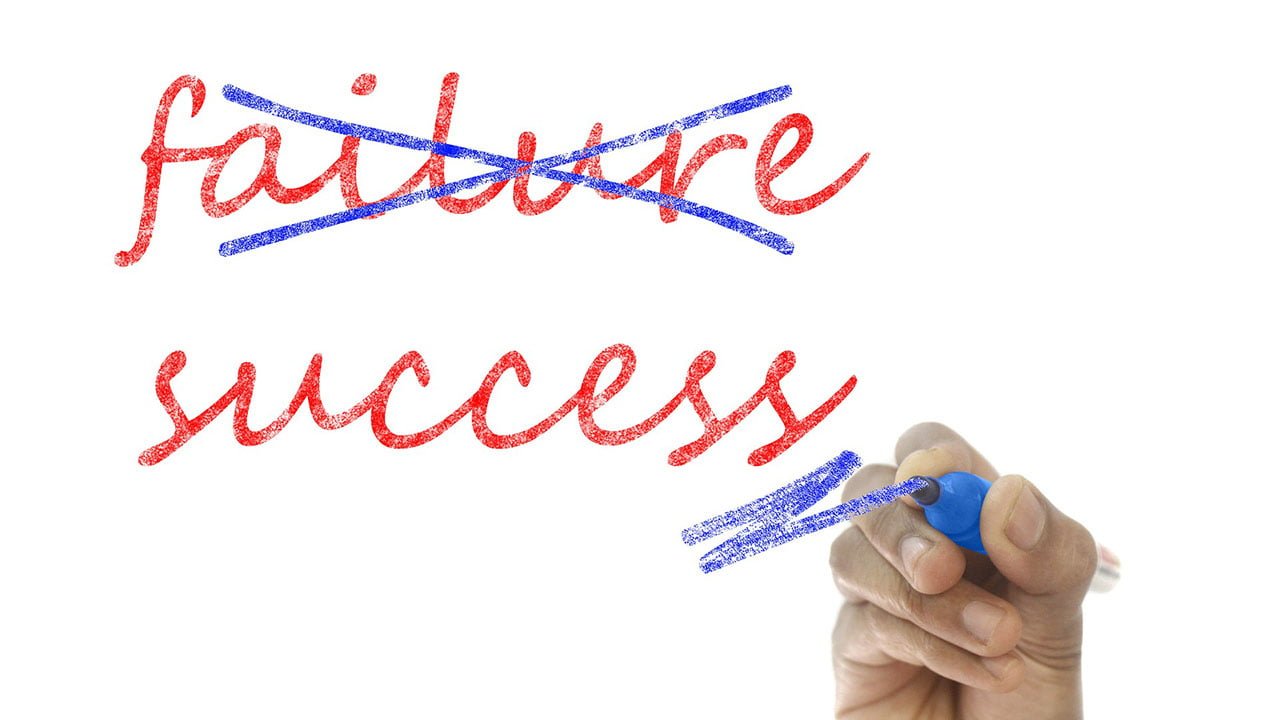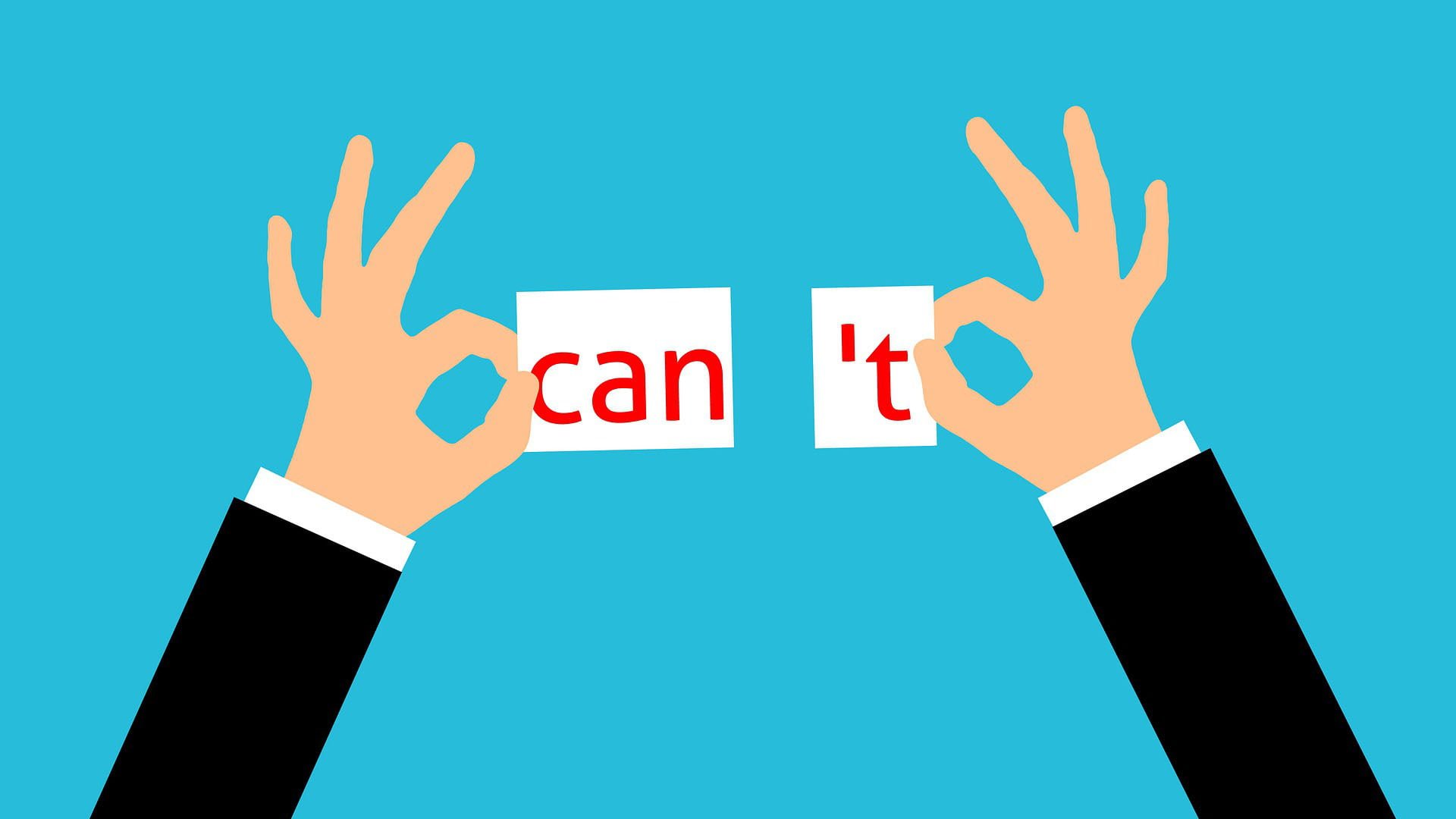Affiliate disclosure: Some of the links below are affiliate links, meaning, at no additional cost to you, I will earn a commission if you click through and make a purchase. As an Amazon Associate I earn from qualifying purchases.
The most effective hack for overcoming fear of failure without struggling
Are you sick and tired because your fear of failure keeps you from living the life you want to live? And, because it keeps self-sabotaging you from achieving your full potentials?
It doesn’t matter what your occupation is. Whether you’re an entrepreneur, athlete, scientist, artist, writer, students, etc. This fear of failure can potentially limit your performance be it in your career, business, relationships, arts or sports.
In this article, I’m going to share with you the most effective hack you can use for overcoming fear of failure without struggling, directly at its very core, for good. So, it won’t stand in your way and keep you from reaching your goals, ever again.
To be direct, the hack consists of 2 parts which work together as a whole:
- Mindset adjustment
- Subconscious mind reprogramming
It may seem simple, but it will take a bit of patience, persistence and, determination to successfully execute it.
But, rest assured, it’s not hard at all.

Now, let me be honest with you.
This is not a list-type post that lists many tips or methods for overcoming fear of failure. Those kinds of posts are already floating around the internet.
This is an effective hack based on experience!
And, it’s designed to be simple, effective and direct.
It works for me and many others; some people I know (friends, colleagues, public figures, etc.), some I don’t. In fact, if you’re searching online, you will find that many people use this technique successfully though they may explain it differently in their own way and using their unique style.
I only make it simple and direct.
Before we start, I’d like to tell you that this approach is meditative in nature. Meaning, it uses a meditation technique in the execution of the hack.
But, don’t think of meditation as just sitting cross-legged. Meditation is a mental exercise. It’s a certain practice to condition the mind, to strengthen the “awareness muscle.”
Let’s start.
First, let’s talk about the truth behind the fear of failure.
Table of Contents
The truth behind the fear of failure

The fear of failure is one of the most common forms of fear. It holds you back in life. It causes you to procrastinate, to avoid, to play safe, and ultimately to self-sabotage yourself.
While it may seem that this fear is normal, we are not born with it.
Toddlers have no fear of failure when they learn to walk because if they do, they’ll all stop trying after only a handful of failed attempts.
On the contrary, what we see is, they keep on trying no matter how many times they fall. They cry. Sometimes, they get hurt. But, they keep on trying. Maybe, it’s nature’s wisdom that they learn to walk first before they learn to count 😄.
Only after they reached a certain age, they begin to “learn” the concept of “failure”. Thus, the “fear” begins.
Unconsciously, parents often teach their children to behave by instilling certain “fear” without thinking much of the future consequences. They do it because they think it’s easy and practical.
Teachers in school also follow this footstep with their dos and don’ts and the accompanying reward and punishment.
The bottom line is, the fear of failure is a learned response.
And, because it’s a learned response, it can be unlearned.
Now, without getting too technical, fear of failure is an emotion product of the amygdala which is the part of the brain believed to be “less-evolved” compared to the more rational neocortex.
As part of the limbic system, the amygdala is responsible for emotional learning and memory modulation.

So, the fear of failure is the emotional response from the brain to the perspective of pains in the forms of embarrassment, rejection, disappointment, or loss of money, social relations, credibility, or self-esteem.
Understanding this is important. Since fear is there as a mechanism to protect us from harm and to keep us out of danger; it is not to be ignored entirely.
With that being said, it is also important to not let this fear hijack all the rational thinking completely, all the time.
This is where awareness comes in handy. We need to maintain balance. So that we can clearly decide which fear to consider and which fear to ignore.
We definitely cannot let the fear of failure sabotaging our success and preventing us from achieving our true potentials.
Now, let’s get to the first part of the hack.
Part 1: mindset adjustment

You know, unconsciously most of us have an exaggerated notion about success and failure. We tend to view success as something to be proud of, extraordinary, great, excellent whereas failure as something bad, undesirable and even embarrassing.
From the meditation standpoint, what we call success is only an effect of the many causes that come together, providing the right condition.
So, the concept of success we’re holding is often OVERRATED.
If you think about it, the one determining factor is often our goal or our desire. It will be even worse if it is other people’s.
If the outcome of a situation is in accordance with our goal or our desire, we call it a success.
Conversely, if the outcome of a situation is not what we expect, we call it a failure.
The truth is, failure only means there’s more to learn; maybe in the approaches, the techniques, the methods, the timings, etc. Or, in other words, it’s a feedback.
And, success only means that all the required conditions have come together in our favor giving us the right condition.
With that in mind, then, success is actually quite boring and potentially make us lethargic. On the other hand, failure is more exciting because it gives us more fuel to learn more, to strive more.

Now, how do we adjust our mindset?
Simple, we borrow great ideas from the greats.
Below are a couple of great quotes you can incorporate. Pick one or several that make you tick:
“All my successes have been built on my failures.”
Benjamin Disraeli
“Fear kills more dreams than failure ever will.”
Suzy Kassem
“I honestly think it is better to be a failure at something you love than to be a success at something you hate.”
George Burns
“You’ll always miss 100% of the shots you don’t take.”
Wayne Gretzky
“Winners are not afraid of losing. But losers are. Failure is part of the process of success. People who avoid failure also avoid success.”
Robert T. Kiyosaki
“Forget about the consequences of failure. Failure is only a temporary change in direction to set you straight for your next success.”
Denis Waitley
“It is hard to fail, but it is worse never to have tried to succeed.”
Theodore Roosevelt
“I can accept failure, everyone fails at something. But I can’t accept not trying.”
Michael Jordan
“Our greatest glory is not in never falling, but in rising every time we fall.”
Confucius
“Failure is the key to success; each mistake teaches us something.”
Morihei Ueshiba

“The only failure is not to try.”
George Clooney
“My great concern is not whether you have failed, but whether you are content with your failure.”
Abraham Lincoln
“Failure is success if we learn from it.”
Malcolm Forbes
“Failure is a detour, not a dead-end street.”
Zig Ziglar
“If you don’t try at anything, you can’t fail… it takes backbone to lead the life you want”
Richard Yates
“Giving up is the only sure way to fail.”
Gena Showalter
“There is no failure except in no longer trying.”
Chris Bradford
“I have not failed. I’ve just found 10,000 ways that won’t work.”
Thomas A. Edison
“Failure should be our teacher, not our undertaker. Failure is delay, not defeat. It is a temporary detour, not a dead end. Failure is something we can avoid only by saying nothing, doing nothing, and being nothing.”
Denis Waitley
“There is only one thing that makes a dream impossible to achieve: the fear of failure.”
Paulo Coelho
“Pain is temporary. Quitting lasts forever.”
Lance Armstrong
“When we give ourselves permission to fail, we, at the same time, give ourselves permission to excel.”
Eloise Ristad
Check this post if you want more.

Make your own quote using the redefined version of failure. You will use it as your new empowering mindset in the form of self-talk.
Maybe it goes something like this:
“Failure is fine, it only means there’s something I need to learn more. It’s valuable feedback I’m grateful for. I’ll be better prepared for the next shot.”
Make your own version that suits you the best for your current situation.
So, the idea is simple.
Drop your old disempowering mindset and install new empowering mindset.
My point is, you must embrace failures!
Because failures are inevitable.
You will have many, many more failures than successes. Believe me, this is a natural process. Accept it.
In fact, always expect failures in everything you do but always give your best shot. If it turns out a success; it’s a bonus. No need to overreact.
My tips:
Keep a journal. Every time you think you have failed, write down something about things you need to learn more and focus on those things rather than the fear.
Now, how do you install this new mindset?
Mindset adjustment is not merely about positive thinking or affirmation or self-talk.
You can do self-talk or affirmation repeatedly but your subconscious mind will still keep self-sabotaging you.
Why?
Because the subconscious mind is the internal mechanism that keeps you safe. If it senses any potential dangers or any potential pains ahead, it will use all its powers to stop you. And, your subconscious mind is insanely powerful.
Forcing the subconscious mind won’t work. You will most certainly fail.
Then, the smartest way is to talk it through.
The question is how can you communicate the new mindset with your subconscious mind and install it effectively?
This is where you use the mindfulness meditation technique to cool down the fear of failure that arises and install the new mindset.
This brings us to the second part of the hack.
Part 2: subconscious mind reprogramming

We’re going to use the mindfulness meditation technique to cool down the fear of failure as it arises in the mind by positioning it as the object of meditation.
The nature of objects in meditation is, they come and go; they arise and pass away.
By doing so, repeatedly, the fear of failure as the object will lose its power over time.
Every time after the fear passes away from the awareness is the perfect time to tell the subconscious mind your new and better version of the mindset you’ve prepared.
This is the perfect timing for your self-talk.
If you’re an experienced meditator or at least have some experience in mindfulness meditation practice, I bet you got the idea.
But, in case you’re new to meditation, grab my free guide here.
Maybe you have no idea what a meditation object is, what the right attitude in practicing meditation is, what awareness muscle is. I’ve explained them in layman term in the guide.
Let me give you a brief explanation:
An object in meditation is something to be aware of, where you pay your attention to.
You don’t hate the object so you don’t try to get rid of it. You also don’t love your object so you don’t cling to it. This is part of the right attitude.
With that in mind, the fear of failure is only an object. It comes in the form of certain thoughts and the accompanying unpleasant feelings.
Because this kind of fear has a significant emotional weight, I consider it a more difficult object. Meaning, you can easily get carried away by it and lose awareness.
That’s why beginners often use a more neutral object for initial practice to build the “awareness muscle” which is your foundation. The most common neutral object for initial practice is your breath.
For the detailed step-by-step version, download my e-book.
Then the more crucial step is building the foundation.
Use your breath as your meditation object. Pay attention to your breath naturally in a relaxed way. No need to regulate your breath. Just breathe naturally.
When you’re paying attention to your breath, do it in a relaxed way. Don’t exert too much energy; don’t strain yourself or you’ll get tired easily.
You can choose either the sensation of the air flowing in and out at the nostrils or your abdomen moving up and down. Whichever you feel more comfortable.
You don’t have to sit cross-legged if you’re not used to it. Though, I’d recommend it if you can. Because it’s easier to relax and to practice for a longer duration in this posture. Alternatively, you can sit on a chair with your spine upright in a relaxed way but don’t lean back.

Rest your hands on your thighs, palms facing downward. Or, palms facing upward, on top of each other, in front of your abdomen, whichever you feel most comfortable.
Eyes closed, open or half-closed, your choice. I’d recommend with the eyes closed for beginners to minimize distractions.
Whenever you find your mind wandering away into thoughts, feelings or memories, gently shift your attention back to your breath. Make this a habit.
Do this at least twice daily. Once in the morning before any activities and once at night before bed. It can improve your sleep too.
Duration?
Ideally, at least 20 minutes each. Of course, you can do longer if you like. If it’s too long, start with 5 minutes, then gradually increase the duration by 1 minute every 2 or 3 days.
After a few weeks of practice usually, you’ll be able to maintain the awareness of your breath for a longer duration without too many interruptions. This means that your awareness muscle is getting stronger.
Want to see real results? Do it consistently for at least 8 weeks. Practice twice daily, for at least 20 minutes each, preferably at the same time of day.
At this point, you can use the strength of your awareness to pay attention to the fear of failure as it arises. You can do this anywhere and anytime while doing activities, not just in sitting posture.
If you can maintain awareness of the fear, in times, it will pass away. You don’t need to argue about this. Because this is the nature of ANY object. You just need to prove it for yourself.
When the fear of failure passes away, the mind will cool down and settled. It’s time to do your self-talk.
That’s it.
That’s the hack for overcoming the fear of failure without struggling.
Do it repeatedly for as many times as needed.
The effect will be gradual but real.
Start small. This way, it will build confidence for the next aim. And the reprogramming process will continue and get easier.
More failures will certainly come. But, fear not because now you have the hack 💪!
Conclusion and recommendation

The hack consists of two parts that work together as a whole.
Fear of failure is a learned emotional response rooted in the old disempowering mindset that is buried deep down in the subconscious mind.
So the hack is replacing that old disempowering mindset with a new empowering one.
But, you cannot force your subconscious mind to do your bidding. It simply won’t work. And, your subconscious mind is incredibly powerful. You wouldn’t want it to be your foe.
So, you need a different approach. A smart one.
The mindfulness meditation technique cools down the mind when the fear of failure arise. This way it provides the perfect condition to install the new empowering mindset.
The caveat is you’ll need to practice meditation. It means consistently, persistently, and patiently.
The best part is, this approach involves no struggling.
It will take a couple of weeks until you experience a real effect. But it is REAL. I talk from experience. Many people report significant progress after 8 weeks of consistent practice.
Now, I’d admit, following a simple meditation guide can be a challenge. For this reason, If you’re really dead serious about overcoming your fear of failure, I highly recommend this 12-week program called the Overcoming Fear of Failure by Giovanni Dienstmann designed specifically for this purpose.
The course is formulated from years of deep research, experience and hard work involving many top techniques and methods on the subject of overcoming fear of failure.
It’s a highly extensive jam-packed full-featured premium course which includes:
- A 12-week coaching program
- 42 straightforward and down-to-earth lessons covering several proven techniques and practical exercises
- Downloadable videos, audios, guided meditations, slides, transcriptions, and PDF worksheet. Access the content anywhere and download it for offline use. (Note: This feature most likely won’t be offered for future launches of this course.)
- Master Your Mind meditation courses (Beginner + Intermediate) are included in the bundle
- All future updates of the course
- A complimentary iPhone and iPad app, with access to all the content + summaries and quotes to inspire your growth
- UNLIMITED email support for three years
You can take the course for $497 (Lifetime Access). It’s a one-time payment with a 30-day money-back guarantee.
If for any reason you’re not happy with the course, you can ask for a refund within 30 days. Not only you’ll get your money back, Giovanni will even give you free coaching to compensate for this. Such confidence he has in this course!
With such a premium price tag, this course is not for everybody. This course is only for you if you’re dead serious about investing in yourself.

But, here’s the kicker:
If you’re into this meditative approach and you intend to harness all the benefit the meditation practice has to offer, you will get much-much better value if you go for the main course called the Limitless Life program which is membership-based, starting at $29 per month, also with a 30-day money-back guarantee.
Want to know the best part?
The Overcoming Fear of Failure course is part of the Limitless Life program.
With the main course, you’ll have the opportunity to try several meditation techniques from different traditions so you can find one that suits you the best.
It’s a full-featured course with a step-by-step system, teacher dialogs, and a supportive community.
Upgrade options which include individual coaching are also available.
You can read my full review here.
UPDATE 27 Feb 2020: It gets even better!
Now, you can start your 14-day trial for just $1, then pay just $29 a month after the trial ends. I guess this offer will only be available for a limited time only. So, you need to act fast!

Before we part, watch this video titled “Dare to move beyond your fear of failure”:
By watching this video, you’ll get a taste of Giovanni’s teaching style: clear, simple, concise and relaxed.
Do you have a simpler and more effective approach for overcoming fear of failure? Please, share it with us in the comment.
Related posts
- Forget Self-Improvement, Do This Instead!
- During the Coronavirus Covid-19 Pandemic, What’s the Best Thing Meditators Can Do?
- The Most Effective Meditation Hacks for Lazy People
- How Can Mindfulness Meditation Help with Depression?
- A Meditative Approach to Overcoming Insomnia and Achieving Deep Sleep
- How to Relieve Stress and Anxiety Naturally?
Featured photo by Tim Mossholder from Pexels
- Too Much Mindfulness, Is There Such a Thing? - March 17, 2022
- 10 Ways Meditation Can Help Improve Your Finance (Number 9 Might Surprise You!) - January 7, 2022
- Forget Self-Improvement, Do This Instead! - September 16, 2021
